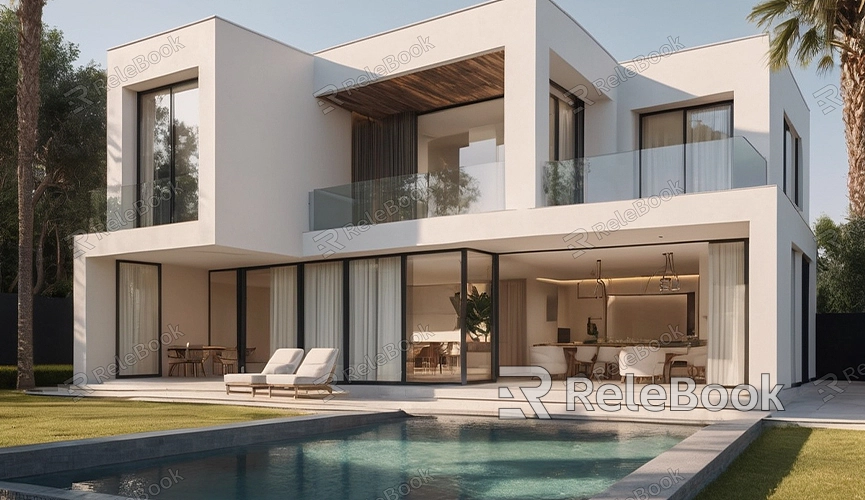C4D how to design a 3d house model
Designing a 3D house model is a creative and challenging process. Cinema 4D (C4D), a powerful 3D modeling and rendering software, provides designers with rich tools and functionalities to realize various complex designs. This article will detail how to design a 3D house model in C4D and share practical tips to enhance your modeling efficiency and work quality.
Understanding Project Requirements
Before diving into design, it's crucial to understand project requirements such as the house style, purpose, and technical specifications. For instance, modern-style houses may require clean lines and extensive glass areas, while traditional styles may involve intricate carvings and decorations.

Initial Design and Conceptualization
Before entering 3D modeling, preliminary design and conceptual work can be helpful. This can be done through hand sketches or using drawing software like Photoshop. Clearly defining the structure, appearance, and main functional areas of the house helps maintain direction during modeling.
Creating the Basic Structure
In C4D, using basic geometric shapes to create the house's basic structure is a good starting point. You can use cubes for walls and floors, cylinders for columns, and planes for the roof. By adjusting the size and position of these shapes, gradually build the basic framework of the house.
Refining the Model
Once the basic structure is complete, you can start refining the model by adding details like doors, windows, balconies, and stairs. In C4D, use tools like Boole operations to cut and merge geometric shapes to create complex structures. For example, using Boolean subtraction, you can cut openings for doors and windows in walls.
Using High-Quality Textures
Textures play a crucial role in enhancing the realism of a model. In C4D, use the Material Editor to add various materials and textures to your model. For example, apply brick textures to walls, wood grain textures to floors, and tile textures to roofs. If you need high-quality 3D textures and HDRI for your projects, or 3D model downloads, you can download them from Relebook for direct integration into your models.
Adding Lighting and Environment
Lighting and environment settings greatly impact the final rendering effect. In C4D, use sunlight to simulate natural lighting, point lights and spotlights for indoor lighting, and add sky objects and HDRI maps for realistic ambient lighting effects.
Rendering and Post-Processing
Once the model and lighting are set up, you can proceed with rendering. In C4D, you can use renderers like Standard Renderer, Physical Renderer, or third-party renderers such as Redshift or Octane. Adjust parameters like resolution, sample count, and global illumination in the Render Settings to achieve high-quality rendering effects.
After rendering, use image editing software like Photoshop for post-processing. Adjust colors, contrast, and brightness, add effects like glow and depth of field to further enhance the visual appeal of your work.
Designing a 3D house model requires a blend of artistic creativity and technical skill. By following a structured design process and optimizing techniques, you can create visually appealing and efficient models. If you need high-quality 3D textures and HDRI or 3D model downloads for your projects, you can download them from Relebook for seamless integration into your models. This not only boosts your workflow efficiency but also ensures superior quality in your work.

